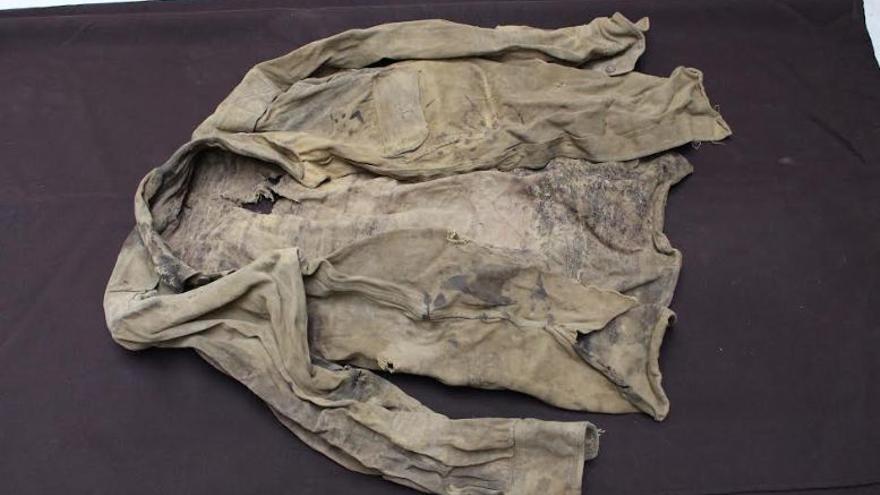
![]() 14ymedio, Juan Izquierdo, Havana, 9 October 2023 — In 2017, Dr. Moisés Abraham Baptista, who performed the autopsy of Che Guevara after his capture and execution, offered a challenge to Cuban authorities: using DNA evidence, verify that the remains found by the island’s forensic experts three decades ago in a grave in Vallegrande, Bolivia, and later reinterred in Santa Clara, are in fact those of the Argentine revolutionary.
14ymedio, Juan Izquierdo, Havana, 9 October 2023 — In 2017, Dr. Moisés Abraham Baptista, who performed the autopsy of Che Guevara after his capture and execution, offered a challenge to Cuban authorities: using DNA evidence, verify that the remains found by the island’s forensic experts three decades ago in a grave in Vallegrande, Bolivia, and later reinterred in Santa Clara, are in fact those of the Argentine revolutionary.
As a basis for comparison, Baptista offered to provide Havana with the shirt Guevara wore when he was captured and that still has his blood and sweat on it, as well as several bullet holes. Baptista kept the garment at his house in Puebla, Mexico, where he moved after leaving Bolivia and where he lived until his death on March 2nd of this year at the age of eighty-three.
The Cuban government, of course, never responded to Baptista, who told his story to two Mexican journalists, Raúl Torres Salmerón and Leticia Montagner. The Bolivian doctor’s account as well as numerous documents, photographs and articles about the death of Guevara were collected by the authors for “I Did the Autopsy on Che Guevara.” 14ymedio was given access to the book, which remains unpublished seven years after Baptista made his claim.
It took Torres and Montagner years to convince Baptista to tell his story
It took Torres and Montagner years to convince Baptista to tell his story. A discreet man who was fully aware of the delicate political nature of the situation, he kept a low profile to avoid harassment by Cuban counterintelligence. After a team of forensic specialists announced the discovery of what they said were the remains of Guevara and several of his companions in 1997, the doctor decided to speak up.
He did it on Mexican television, saying he had remained silent out of concern for his own and his family’s safety. “People must know how the things I experienced happened. It’s no longer a secret,” he said. The shirt, preserved in excellent condition by Baptista, is a key element in his argument. It came into his possession in 1967, after the autopsy, while he was working as director at the Señor de Malta hospital in Vallegrande.
Torres and Montagner, who had access to the shirt, are thorough in their description. The garment, placed on a rack in Baptista’s residence in Puebla, smells like “blood, sweat and gunpowder,” they say. The fabric is khaki and has “two large tears, one six inches and the other three inches.” The bullet holes in the fabric provide some clue as to the quantity and trajectory of the sixteen bullets that hit Guevara and which of them, according to Baptista, killed him.
“The shirt still has some curly, light brown hairs on it, some of which can be seen on the collar,” the authors state. Photographs of Guevara in Bolivia confirm that these were the clothes he was wearing when he died. Baptista reported that the body, which was delivered to the hospital’s laundry room, had a lot of blood on the back. “When undressing him to wash the body, [I saw] a strange, large wound. This could have been from a bayonet or from a Garand M2 automatic carbine fired at very close range,” the doctor said.

In his 1967 reports, Baptista initially stated that Guevara suffered seven gunshot wounds but later revised the number to nine. On several subsequent occasions, he confessed that these figures had been “invented.”
Based on Baptista’s testimony, Torres and Montagner concluded, “When the first shots were fired, it is likely that he fell forward — that is, face down — and was still alive. They tried to finish him off with a machete, a bayonet or with a closed discharge from a machine gun while his back was turned up. He was still alive. They immediately turned him face up and he was killed by a shot to the heart. Judging from the trajectory of the bullet as indicated on his shirt, that was from top to bottom.”
After finishing the autopsy, Baptist severed the hands from the body as evidence that Guevera had been killed. He injected formaldehyde into the body to preserve it and, though he lacked the proper materials, made a death mask.
“I Did the Autopsy on Che Guevara” includes several appendices including Baptista’s medical reports, details about his departure from Bolivia, photographs of Guevara and his shirt, the doctor’s “political will and testament,” articles by the two authors — published in El País and Letras Libres — questioning whether it is Che’s remains which are buried in Santa Clara, and a short biography of Tamara Bunke, one of the guerrillas who accompanied Guevara on his expedition.
____________
COLLABORATE WITH OUR WORK: The 14ymedio team is committed to practicing serious journalism that reflects Cuba’s reality in all its depth. Thank you for joining us on this long journey. We invite you to continue supporting us by becoming a member of 14ymedio now. Together we can continue transforming journalism in Cuba.
